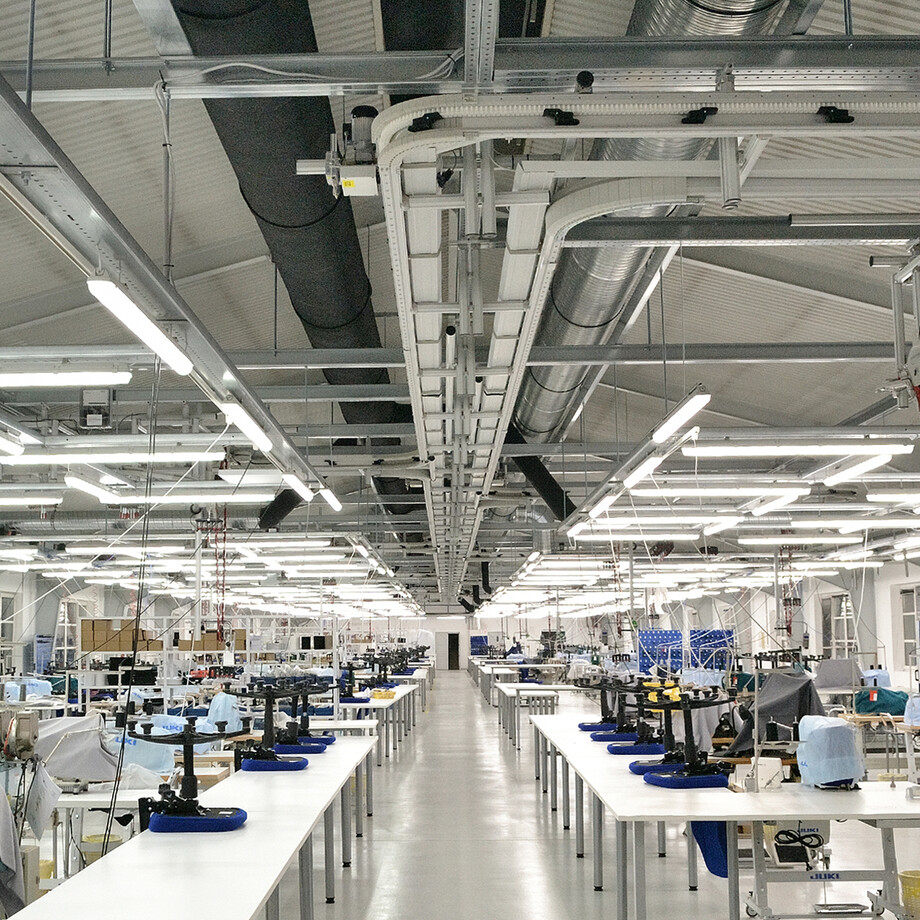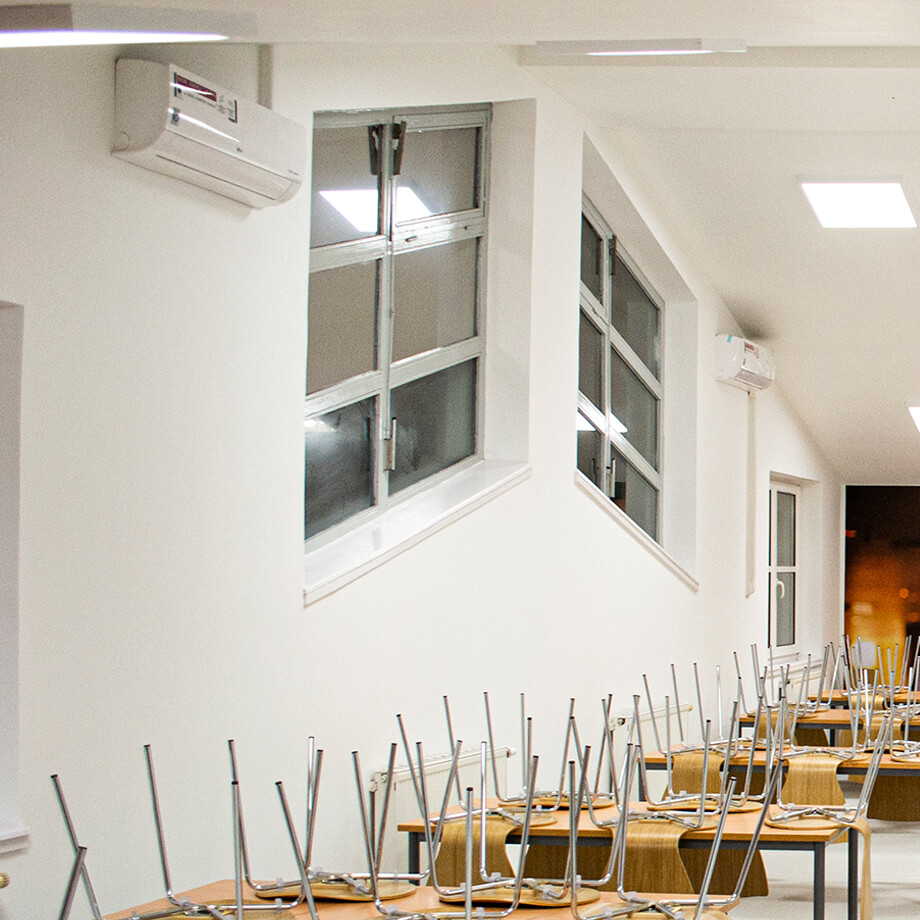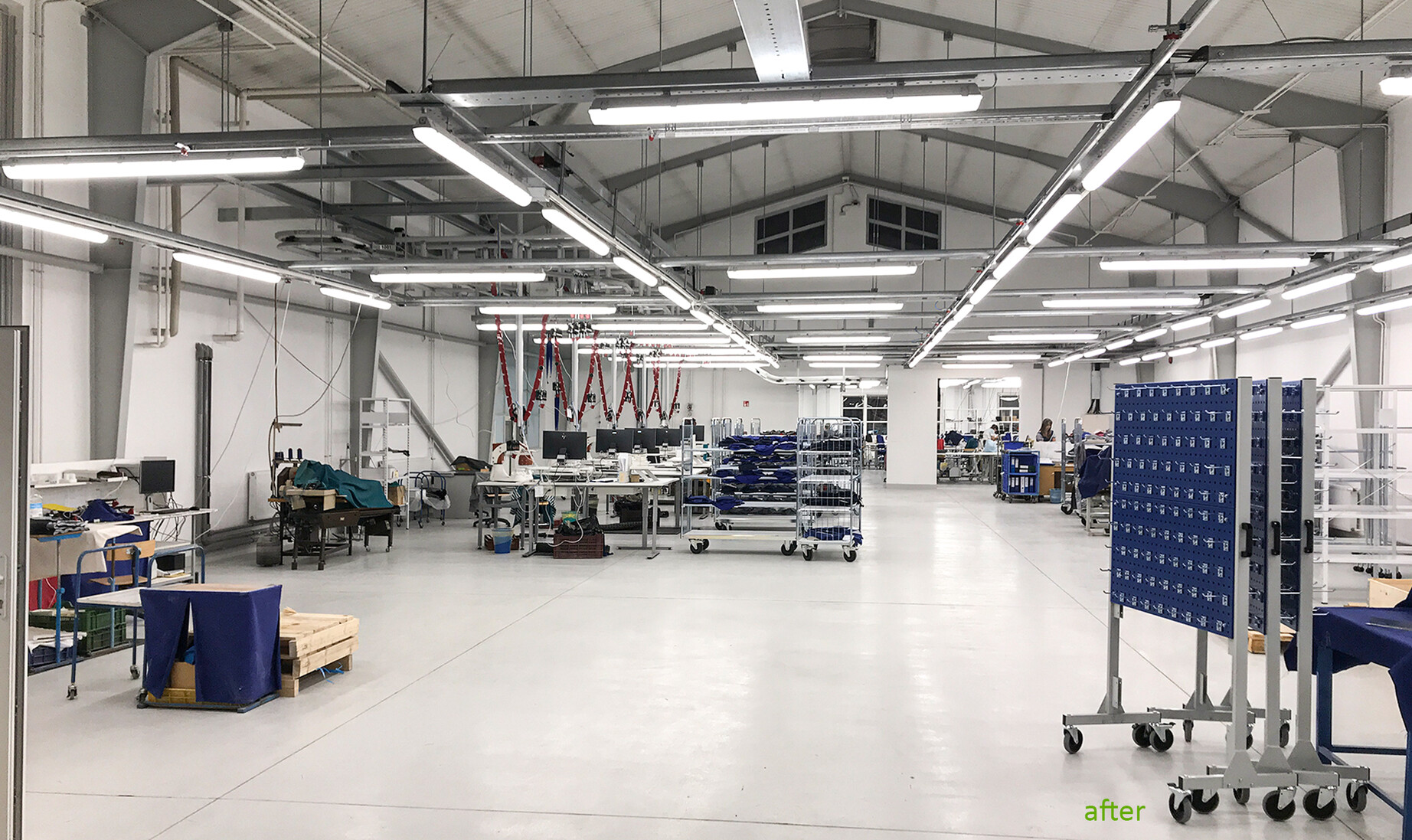

Work clothes are already being produced in full swing in Kazincbarcka, but not in the way and in the working environment that was customary for the last 20 years. The sewing factory, formerly known as Kübler and then Salzol, was acquired by the Lindström Group who then commissioned AddVal Kft. to manage modernisation. We asked our colleague Csaba Vincze, project manager at AddVal, about the interesting facts of this project. How did this assignment differ from an average renovation? Fortunately, the customer's goal was not only a clean and paint job but to create a Central European centre, with a completely new production method following a classic change of ownership.




As a result, we have had the opportunity to prepare and support the integration of international technologies, such as the conveyor system that automates the manufacturing process. This was done in the spirit of complete optimisation of production, whereby, in addition to a minimum stock of raw materials, the production delivery time can be reduced to 3 days from the date of order, thanks to the individual production management system. This is a huge advantage in our accelerated world, if large companies grow with hundreds of employees every week.
How did all this appear during the planning phase? We worked together with the professional team of the customer, so the assessment of the needs went smoothly, and we were able to implement a lot of experience from their other sewing factory in Latvia, which had been built for a similar purpose about two years ago.
Since we had to work with an existing building, we have had to deal with quite a few difficulties that would not have occurred in a green-field investment. For example, the indented layout of the previous floor plan was inconsistent with the new, easily applicable, and reasonable mechanism of Lindström Prodem. Furthermore, the ceiling was also too low for the new functions. Because of the above reasons, halls and rooms were opened, and the latter resulted in maximum use of the installation space between the cable trays and the roof plane. Of course, the separate halls also had their advantage, as they provided sufficient separation for production and construction.

Finally, how would you sum up your time on the project?
It was challenging, which is also why it was exciting. It was great to attend the opening ceremony and to see that the production is managed now with the most modern tools of Central Europe, where, until recently, almost everything was done manually.
The seamstresses and technicians are still the same people, but today they can do their jobs under much better working conditions. Domestic orders and orders from the Czech Republic, Slovakia, Croatia or even Serbia can be completed (including sewing) and delivered within a few days. The role of AddVal Kft. in the project included general design, project and construction management as well as carrying out technical inspector tasks.